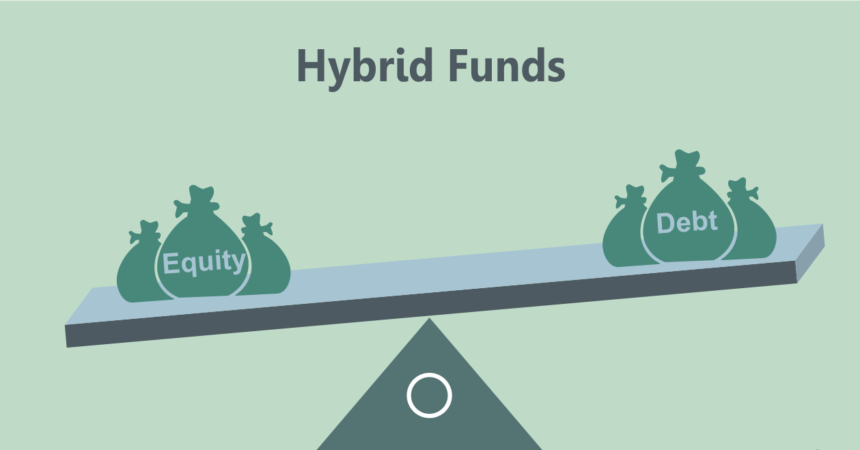Hybrid funds are a unique blend of debt and equity instruments providing you with diversification features and the potential to earn higher returns. Owing to their investment strategies and risk management potential, hybrid mutual fund has come across as an attractive financial option for both aggressive and conservative retail investors. Explored here are the various reasons behind the increasing acceptance of hybrid mutual funds among investors and factors that new retail investors must consider before zeroing in on any hybrid fund.
What are the parameters influencing the performance and acceptance of hybrid funds?
Hybrid funds’ rising acceptance among investors may be attributed to various factors. Firstly, such funds provide a balanced approach by adding your investible in both debt and equity instruments. This blend offers higher capital appreciation features through equity exposure, besides providing regular income and stability from debt instruments. Next, hybrid mutual funds are best matched for those with moderate risk tolerance levels. Through such funds, you can take part in equity and capital markets while lowering the downside risks linked with equity mutual funds. By diversifying your investment portfolio throughout asset classes, such funds aim at delivering consistent returns even during market volatility. Thirdly, hybrid mutual funds provide simplicity and convenience to you. By investing in a single hybrid scheme, you can avail exposure to a diversified investment portfolio reviewed and managed by fund managers. This lowers the requirement to individually manage your rebalancing and asset allocation, making the hybrid mutual fund a prudent financial option, especially if you have inadequate time and expertise to manage your investments actively.
What are the factors you must consider before investing in a hybrid fund?
- Risk profile
Evaluate your investment goals and risk appetite before selecting a hybrid mutual fund. Distinct hybrid mutual funds have different risk profiles, ranging from conservative to aggressive. Choose a mutual fund that is in line with your financial objectives and risk tolerance level.
- Asset allocation strategy
Go through the fund scheme’s fact sheet to understand the asset allocation strategy. Some schemes come with the flexibility to adjust dynamically the asset allocation depending on the market conditions while others have a fixed asset allocation to debt and equity. Opt for the fund scheme, which is in alignment with your investment time frame and expectations.
- Fund manager expertise
Assess the experience and track record of the mutual fund manager. An experienced and skilled fund manager can play an important role in generating consistent returns and market uncertainties. Look for a mutual fund with a seasoned manager having demonstrated expertise and knowledge in managing funds.
- Expense ratio
Factor in hybrid funds’ expense ratio. Lower ratios have a positive impact on thorough returns, particularly over the long term. Compare expense ratios of distinct mutual funds and select the one that endows an excellent balance between performance and cost.
- Fund consistency and performance
Assess the hybrid funds’ historical performance, considering both long-term and short-term returns. Look for mutual funds with demonstrated constant performance throughout market cycles. Avoid mutual funds with high volatility and erratic performance.
Conclusion
Investing in a hybrid fund is a prudent strategy for diversifying your portfolio to attain a mix of stability and growth. When factoring in hybrid mutual funds, it is crucial to assess parameters like asset allocation strategy, risk profile, fund manager expertise, fund performance and expense ratio. By carefully factoring in these aspects, you can make an informed investment decision and make the most out of the hybrid funds. Note that, a diversified portfolio that involves hybrid funds can offer income, stability, and growth opportunities, thus assisting you attain your crucial life goals over the long run.













